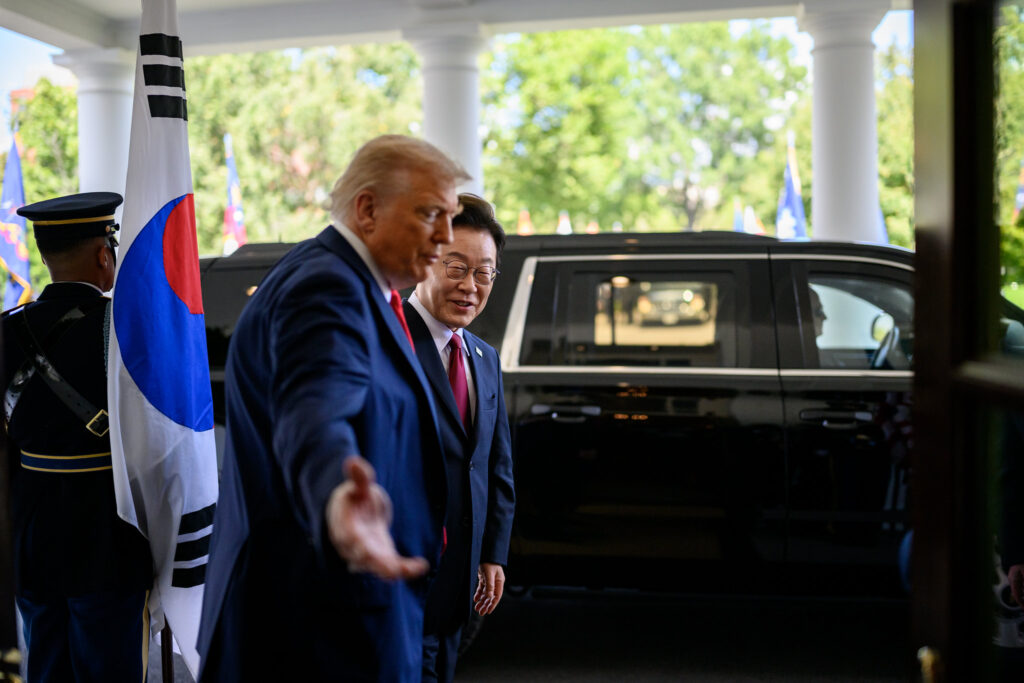The Peninsula
Toward a U.S.–South Korea Alliance Renaissance
Published September 15, 2025
Author: Patrick Cronin
Category: U.S. Foreign Policy, US-Korea alliance

The U.S.–South Korea alliance has deterred renewed war on the Korean Peninsula for seventy-two years. And while neutralizing Pyongyang’s nuclear threat remains essential, Washington and Seoul must cast their vision to the broader challenge of shaping regional peace and prosperity.
For the 1953 Mutual Defense Treaty to remain both “ironclad” and the “lynchpin” of Indo-Pacific security, leaders must accelerate its adaptation. President Lee Jae Myung is right to frame U.S.-South Korean relations around three pillars: a modernized military alliance, reciprocal economic security, and deeper industrial cooperation. Together, these three pillars form a workable framework for a forward-looking alliance.
The alliance cannot be defined solely by North Korea. The treaty itself does not even cite a specific adversary. The allies generally know how to deter Pyongyang, though its ambitions continue to evolve. The harder challenge lies in countering China’s gray-zone coercion, preventing the weaponization of critical minerals, and responding to state-driven industrial policies aimed at mastery over the Fourth Industrial Revolution. Beijing’s use of its Victory Day celebration to project itself as a guardian of the postwar order should remind Washington and Seoul that tariff disputes and burden-sharing quarrels pale beside the need for democratic allies to lead in shaping order. A modern alliance must take on these challenges head-on.
A modern alliance begins with a robust defense of shared national interests and clear goals suited to the moment. That means South Korea sustaining defense-budget growth and the United States reaffirming alliance guarantees. Despite recurring rumors of U.S. troop withdrawals, the Donald Trump administration has so far reassured on the alliance’s overall trajectory. Numbers may fluctuate, but presence matters. As Admiral J.C. Wylie observed, “The ultimate determinant in war is the man on the scene with a gun.”
Any changes to the U.S. force structure that are designed to increase mobility and resilience should be seen as opportunities, not risks. The last major quarrel over “strategic flexibility” occurred two decades ago, amid the global demands of Afghanistan and Iraq. Today, both nations should recognize that all of their forces contribute to the shared strategic goal of regional peace and deterrence.
Deterrence also rests on nuclear credibility. The United States and South Korea must keep integrating South Korea’s conventional forces with U.S. conventional and nuclear capabilities, expand extended deterrence mechanisms, and regularly deploy strategic assets. As Seoul and Tokyo deepen their cooperation, new openings are emerging for a region-wide deterrence framework, perhaps even an Indo-Pacific adaptation of “nuclear sharing.”
In an era of geoeconomic rivalry, economic and industrial security are as vital as military strength. President Trump has pressed Seoul to accept a 15 percent tariff on Korean exports, partly to offset a USD 66 billion U.S. trade deficit. In parallel, President Lee pledged USD 350 billion in U.S. investment and USD 100 billion in LNG purchases. At the business roundtable on the sidelines of the U.S.-South Korea summit, Korean firms went further, promising another USD 150 billion in direct U.S. investment.
These investments strengthen both economies and bolster key sectors in advanced technologies. Shipbuilding stands out as emblematic of a modern alliance that merges economic gain with industrial integration. As President Lee declared at the Hanwha Philly Shipyard, “The 72-year-old alliance between South Korea and the U.S. will open the door to a future-oriented comprehensive strategic alliance that brings together the alliance in terms of security, economics, and technology.”
Shipbuilding exemplifies the link between economic security and industrial capacity. The war in Ukraine is a stark reminder that inter-state wars still occur, escalate rapidly, blur military and civilian domains, and involve uncrewed systems, vulnerable high-cost platforms, and nuclear threats. Wars of attrition demand manpower and industrial might.
China’s intentions may be benign today, but intentions shift. What would be reckless is for democracies to remain dependent on Chinese supply chains and China’s dominance of heavy manufacturing and future technologies. Washington and Seoul must respond by tightening export controls, co-developing leading-edge semiconductors, AI, energy, and advanced shipbuilding, and expanding allied production across the digital technology ecosystem.
The door is open to a new phase of the alliance. With follow-through and strategic focus, a South Korea-backed renaissance in U.S. shipbuilding could spark a broader alliance renaissance.
Dr. Patrick M. Cronin is Asia-Pacific Security Chair at the Hudson Institute and a Scholar in Residence at the Carnegie Mellon Institute for Strategic and Technology (CMIST). All views expressed are the author’s alone.
Photo from The White House.
KEI is registered under the FARA as an agent of the Korea Institute for International Economic Policy, a public corporation established by the government of the Republic of Korea. Additional information is available at the Department of Justice, Washington, D.C.
